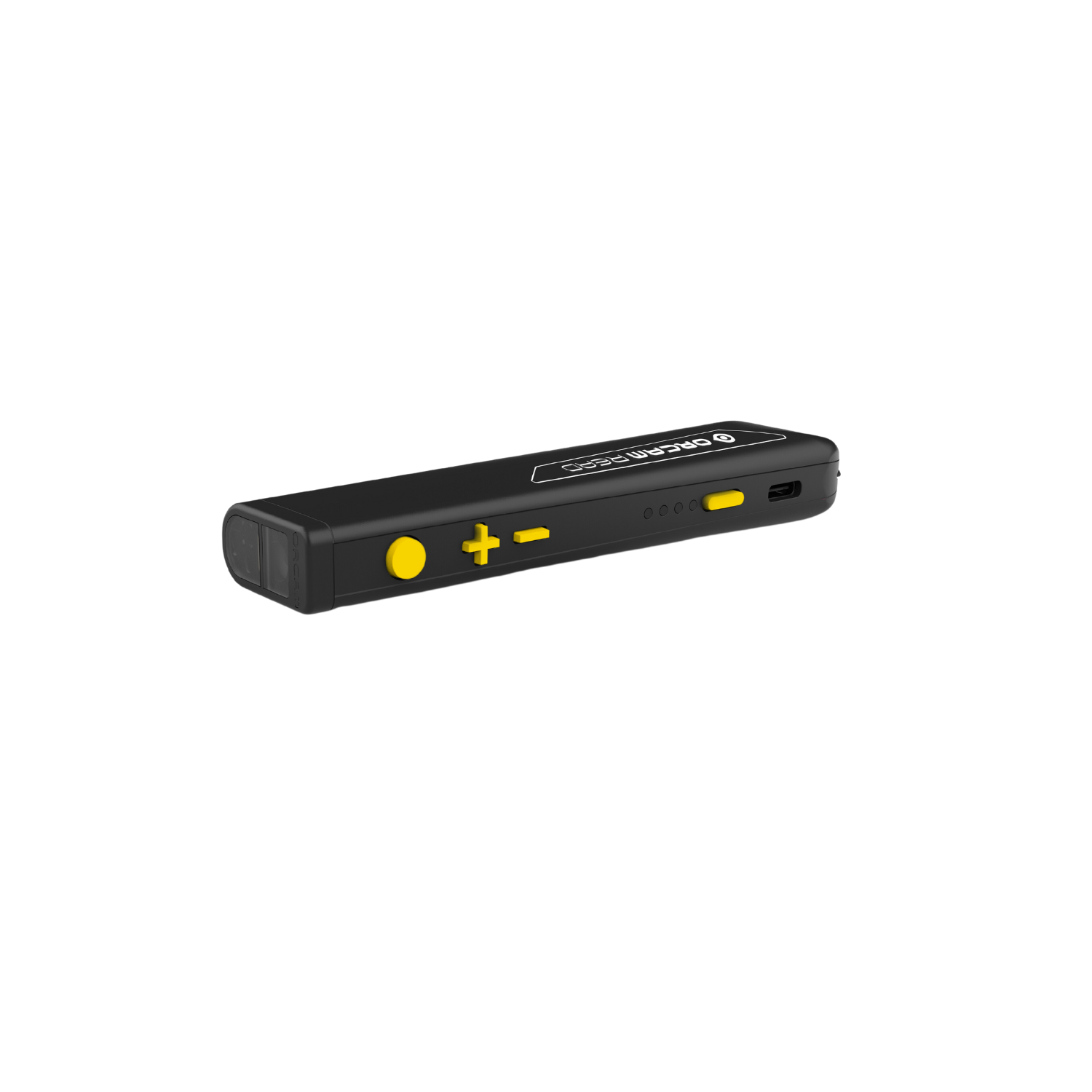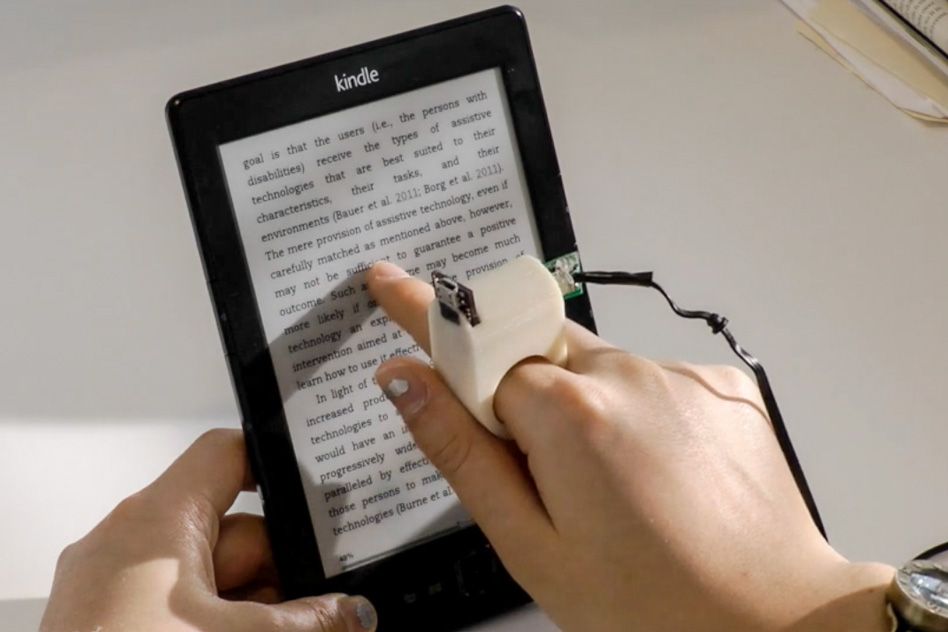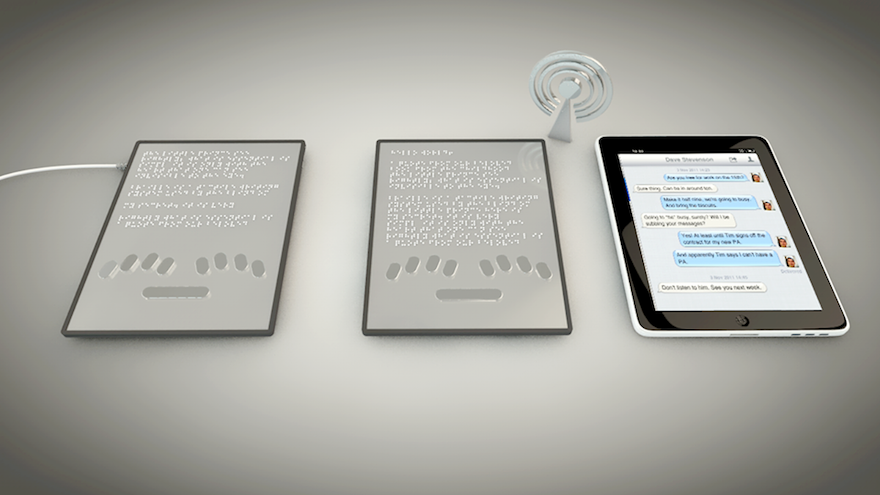Discover Innovative Devices Designed for the Visually Impaired
The growth of cutting-edge devices for the visually impaired stands for a considerable improvement in accessibility and freedom. Technologies such as wise glasses with AI capabilities and mobile applications made to supply auditory summaries are reshaping day-to-day experiences for users.
Smart Glasses for Navigating

Smart glasses developed for navigating are changing the way aesthetically damaged individuals interact with their atmosphere. These innovative devices use a mix of video camera technology, expert system, and acoustic responses to provide real-time info concerning environments. By employing obstacle discovery systems, wise glasses can signal customers to possible risks, allowing safer mobility in both familiar and unfamiliar setups.
The assimilation of GPS technology further improves navigation capabilities, permitting users to obtain acoustic directions as they move. This hands-free approach not just promotes independence however likewise encourages visually damaged individuals to navigate city landscapes with raised self-confidence. In addition, numerous smart glasses are outfitted with attributes that identify landmarks and street indications, supplying contextual info that boosts the user experience.
Additionally, the development of these tools is constantly progressing, with companies functioning to boost the precision of object recognition and expand the variety of navigational attributes. As smart glasses end up being much more cost effective and obtainable, they hold the potential to dramatically change everyday life for aesthetically impaired customers. Inevitably, these ingenious tools represent a critical action toward inclusivity, offering boosted flexibility and a higher sense of freedom for people browsing the globe around them.

Mobile Application for Daily Living
How can mobile applications improve the every day lives of visually impaired individuals? Mobile apps are changing the means visually impaired users navigate their environments, handle daily jobs, and access details. These applications supply crucial assistance through various performances, promoting independence and enhancing lifestyle.
Several ingenious mobile applications are developed specifically for day-to-day living. Applications like Be My Eyes connect visually damaged users with sighted volunteers by means of video phone calls, allowing them to get real-time assistance with jobs such as reading labels or browsing strange spaces. In A Similar Way, Seeing AI, created by Microsoft, utilizes synthetic knowledge to define surroundings, reviewed message, and identify items, efficiently transforming a mobile phone into an effective tool for everyday assistance.
Furthermore, navigating applications customized for the aesthetically damaged, such as Aira and BlindSquare, provide audio-based directions and environmental details, enabling individuals to traverse their surroundings safely and confidently. Past navigating and immediate support, mobile apps also sustain organization and job administration, with functions that help users set reminders, develop to-do lists, and track appointments. In recap, mobile applications serve as vital resources, equipping visually damaged individuals to lead more independent and fulfilling lives.
Wearable Technologies for Aid
Empowerment with innovation is significantly obvious in the realm of wearable devices created to assist aesthetically damaged individuals. These cutting-edge tools incorporate effortlessly right into day-to-day live, boosting navigating and offering vital responses to customers. Wise glasses geared up with cams can identify faces and review text aloud, allowing individuals to engage more confidently in social and specialist setups.
Another significant innovation is the usage of haptic comments systems in wearable gadgets. These systems go to this web-site utilize resonances or other responsive signals to share information regarding the individual's setting, such as challenges or modifications in terrain, enhancing flexibility and security. Wearable innovations likewise include wristbands that attach to smart devices, notifying customers to notifications with subtle vibrations, hence boosting connectivity without dependence on aesthetic hints.
As these technologies continue to progress, they are not just improving freedom for aesthetically damaged people however additionally fostering a better sense of inclusion in culture. By linking the void in between challenges dealt with in day-to-day living and the possibility for freedom, wearable technologies act as critical tools in the pursuit for equal rights and empowerment for those with visual disabilities.
Sound Description Tools
Sound summary tools play a vital role in improving ease of access for aesthetically impaired individuals, providing them with the capacity to engage with visual media. Screen readers for the blind. These tools provide narrated descriptions of crucial visual aspects in movies, tv programs, and live efficiencies, ensuring that customers can completely understand the context and feelings conveyed through visuals
Audio description can be integrated right into numerous platforms, including streaming solutions, cinema testings, and live theater. Many popular streaming solutions now consist of audio description as an ease of access feature, permitting viewers to choose it conveniently. In addition to mainstream media, specialized applications also exist, giving audio summaries for art exhibits, galleries, and various other social occasions.
The performance of audio summary rests on the skill of the storytellers, that need to share visual details succinctly without interfering with the original sound. Developments in this field are also leading the way for more individualized experiences, where individuals can readjust the level of information and pacing according to their preferences.
Braille Innovations and Instruments
Braille advancements and tools have dramatically transformed the method visually impaired individuals engage with text and information. Modern improvements have caused the development of versatile tools that improve literacy and freedom among customers. Especially, Braille show modern technologies have actually evolved, permitting find out vibrant analysis experiences. These tools transform digital text right into Braille, making it possible for users to access a substantial range of information on tablet computers, computers, and smart devices.
Additionally, mobile Braille notetakers incorporate typical Braille input with contemporary pop over to this web-site performances, assisting in note-taking, organizing, and record editing on the go. AI-powered visual aids. These portable gadgets typically feature text-to-speech abilities, connecting the gap in between Braille and auditory details
Additionally, ingenious Braille printers have actually emerged, enabling users to create Braille labels, files, and academic materials successfully. This access promotes higher engagement in instructional and specialist settings, ultimately advertising inclusivity.
Additionally, research right into wise Braille innovations remains to expand. Instruments that include synthetic knowledge are being explored to offer real-time navigating help and contextual information, enhancing the user experience in varied setups. Overall, these advancements reflect a dedication to empowering aesthetically damaged people with modern technology, ensuring they can easily gain access to and involve with the world around them.

Verdict
The development of ingenious devices for the aesthetically damaged dramatically boosts self-reliance and high quality of life. These innovations not only foster better addition however likewise advertise autonomy in daily activities, eventually adding to an extra obtainable and fair society for visually impaired people.
As wise glasses end up being a lot more inexpensive and available, they hold the prospective to considerably transform day-to-day life for aesthetically damaged individuals. Mobile apps are changing the way aesthetically damaged users navigate their settings, take care of daily tasks, and gain access to details. Apps like Be My Eyes attach aesthetically impaired customers with sighted volunteers using video phone calls, allowing them to obtain real-time support with jobs such as checking out labels or browsing unknown areas.Furthermore, navigating apps tailored for the aesthetically impaired, such as Aira and BlindSquare, use audio-based instructions and environmental information, making it possible for individuals to traverse their surroundings safely and confidently.The innovation of ingenious tools for the visually impaired dramatically boosts independence and quality of life.